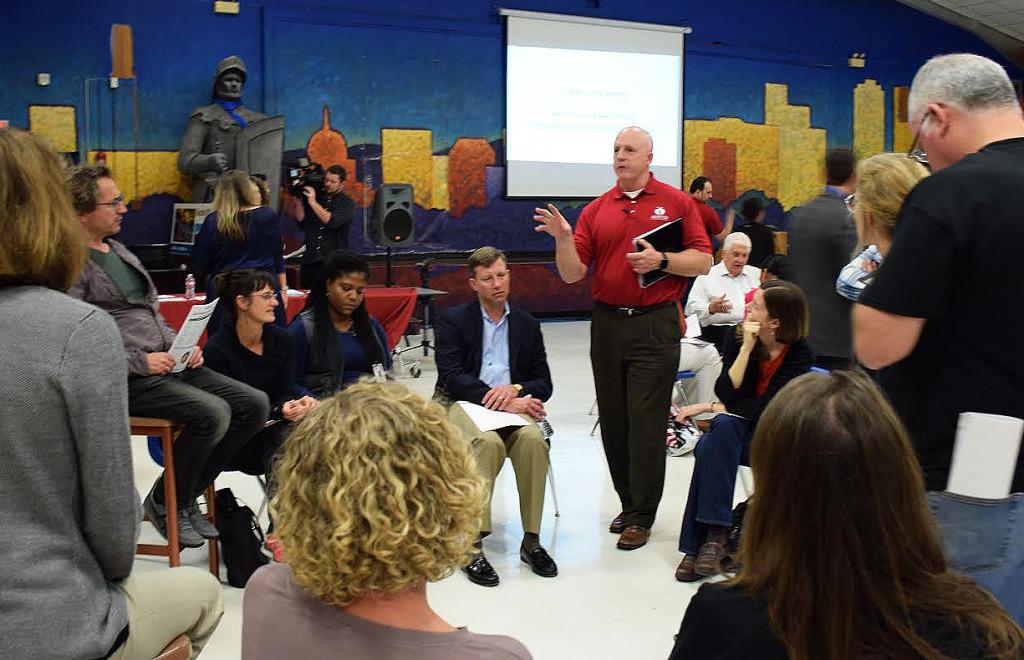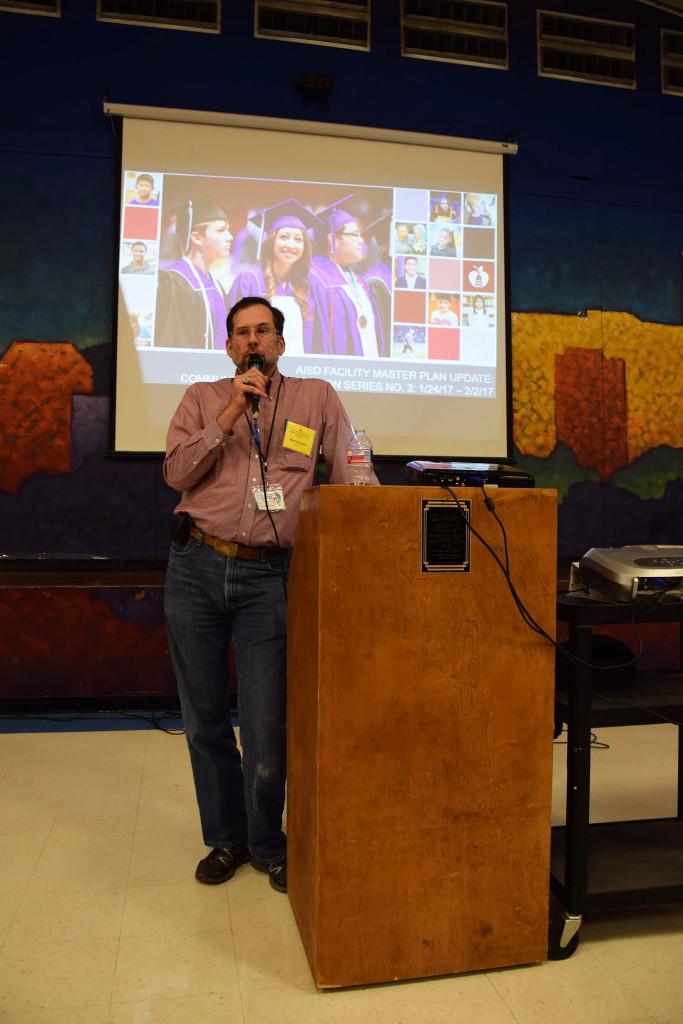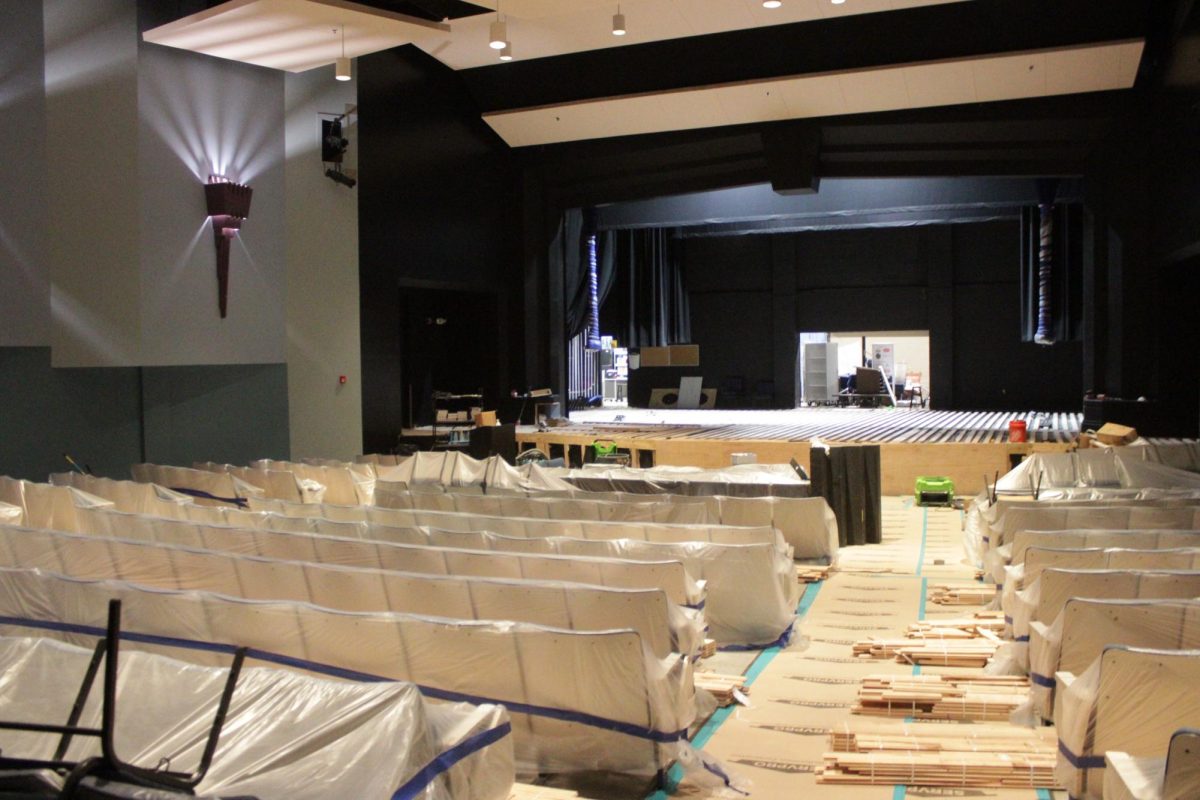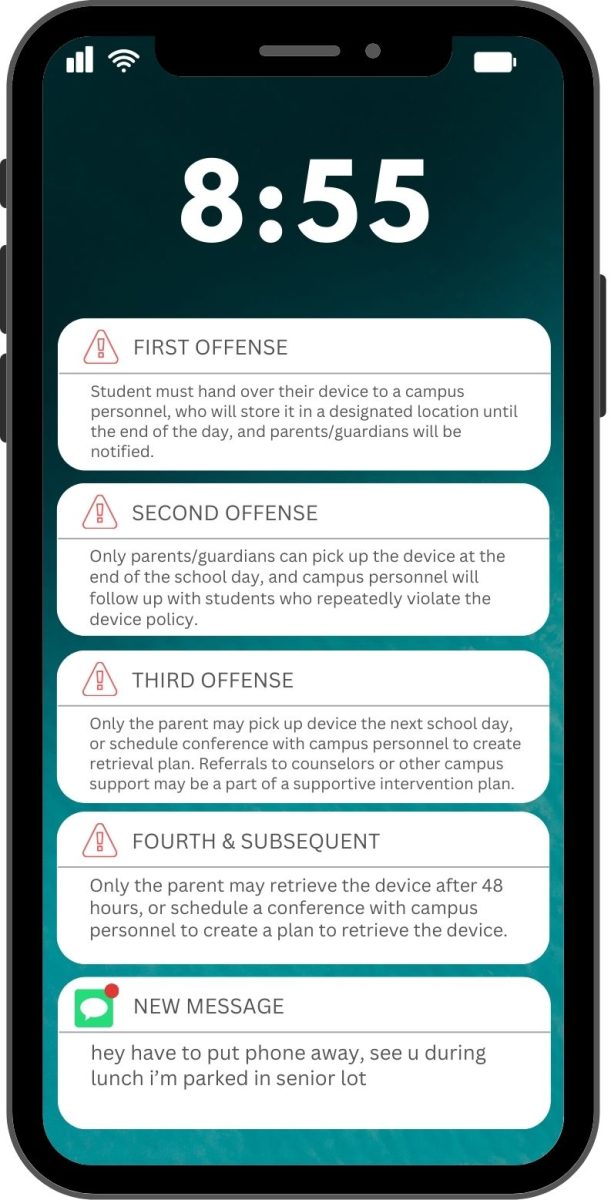
The uneven quality of the facilities across the Austin Independent School District is no secret. Some campuses are woefully outdated while others are shining examples of modernity. While McCallum certainly isn’t most modern of campuses, it is also far from the most antiquated.
For the past two years, a committee of concerned citizens has worked to resolve this vast disparity and bring all AISD facilities into the 21st century so that they will serve the needs of the students who attend now and in the future.
This committee, made up of 18 citizens called the Facilities and Bond Planning Advisory Committee, or the FABPAC, has been tasked with creating a Facility Master Plan, or FMP, that will develop a bond package to meet the needs of facilities within the district.
“AISD is doing a remarkable job in addressing an overwhelmingly difficult situation,” FABPAC member and McCallum parent Jodi Leach said. “They have high expectations for our schools, and the time, manpower and support that they have given this process reinforces that. I’m particularly impressed with the fact that, by using educational programming as the driving force behind the process, the students’ are consistently the priority of AISD.”
SOME CAMPUSES ARE CENTURIES OLD

AISD is seeing a problem with aging buildings, as the average age of the buildings in the district is 40 years old, and some have been around for over a century. McCallum is the oldest AISD school still operating in its original building.
“McCallum’s facilities are in much better shape since the last two bond packages, which included the new theater, three new art classrooms, three new science classrooms…two renovated life skills rooms, [and a] new weight room,” principal Mike Garrison said. “We still have HVAC (air conditioning/heating) issues throughout the school…we have leaks in our roof in many places, [and] we have water fountains that are broken and don’t work.”
In 2013, voters passed a bond worth $500 million to address renovation issues like replacing old air-condition, plumbing and fixing leaks, but the FABPAC asserts that it was not enough to address to complete needs of the district. The same year that the bond allocating $500 million for renovation issues was passed, voters also rejected a $234 million proposal calling for new schools and campus expansions to relieve overcrowding.
“You can well imagine that much has changed in technology and the methods of teaching over the last 40-50 years that could be improved upon with renovated or brand new buildings,” trustee Julie Cowan said. “Routine maintenance of our 130 buildings is always a challenge … because past AISD school boards have been cautious with asking Austin voters for additional tax dollars through bonds, some of the largest projects seem to have been set aside. The results that FABPAC is finding from its summer study of all 130 buildings is that storage is sadly lacking, HVAC systems and plumbing are in great need, and some schools are too small to serve the number of kids in their surrounding neighborhoods. Additionally, individual campuses have a bigger vision for academic programs and AISD’s older facilities were not created to meet those expectations.”
A COMPREHENSIVE ANALYSIS LEADS TO PROPOSED SOLUTIONS
AISD and the FABPAC have worked with several consultants, including from the firm Brailsford & Dunlavey, in order to gather data and create recommendations. One of their contributions consisted of the Facility Conditions Assessment and Educational Suitability Assessments, which analyzed every facility in the district based on the conditions of the physical buildings and the ability of each school to provide an excellent learning environment.
“I think we have the best students and teachers in the nation, and they deserve more than what we are providing them,” AISD CFO Nicole Conley said. “We should lead the nation in providing modernized classrooms that inspire both our teachers and our students. Our community deserves nothing less. However, we do face challenges. As I mentioned, the average age of our schools is 40 years old. Their ages are showing, and they are becoming more costly to maintain. On the opposite end of the spectrum, we have schools … that feature modern architectural elements that provide lots of natural light, common areas where students gather, and new classroom technology. These schools are excellent learning environments and build pride within the communities they serve.”
Included in the recommendations is a plan to consolidate and/or close eight pre-K or elementary schools because of under use, dangerous structural issues or unsuitability for proper education. Last November, T.A. Brown Elementary School was unexpectedly shut down after critical problems with the building’s foundation, adding to AISD’s $2 billion in deferred maintenance.
These closures are controversial among parents; immediately after Dobie prekindergarten was announced as one of the potential closures, a group of parents showed up at the school to protest the recommendation with chants and signs.
RELOCATIONS, CLOSURES AND MODERNIZATION
In addition to proposing closures, the board is considering relocations and potentially adding six new buildings; notable examples include building a new high school in southeast Austin and LASA potentially moving completely out of LBJ, to either one dedicated location or splitting up the program at different schools.
In addition to renovation, replacements and consolidations, the FMP plans to address modernization: utilizing technology and design to create an enhanced 21st century education.
“I’m sure that there will be different feelings about the plans,” said Paul Turner, Executive Director of AISD’s Office of Facilities. “Most people are not opposed to modernizing or renovations being done, although it’s sometimes inconvenient. We also have in this plan the possibility of consolidation of schools. Those tend to be hard conversations. I’m sure there will be community members who have questions and concerns that will come out during this community engagement process.”
On Jan. 24, the FABPAC held the first of its third series of community engagement meetings in McCallum’s cafeteria, where they talked to a crowd of nearly 200 about the newly outlined recommendations and organized attendees into moderated discussions to offer their opinions on the plans.
When it comes to funding, the district is relying on the money they’d save from closures/consolidations and the fact that better facilities may attract students that could potentially be lost to charter or private schools.
While the scope of the FMP is intended to be from 20-30 years, it’s also encouraged to be a living document that is continually revised as often as every two years.
Throughout the process of this major FMP overhaul, the FABPAC members say that they are relying on AISD community members to attend the meetings to learn more about their efforts and to offer their own unique insight in order to create the best plan possible.
“The FABPAC’s intention is to present a long range plan to address all of this large urban district’s needs while not overwhelming taxpayers,” Conley said. “I believe the Austin community supports public education and our schools and will support the work of FABPAC after they learn how much time, effort, and data collection has been taken.”







